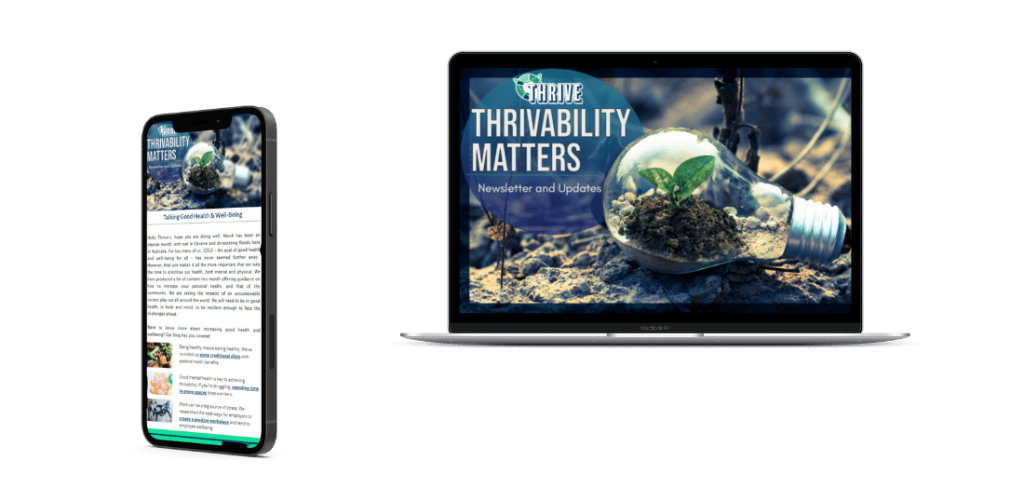Index:
- What Is Ocean Governance?
- Demystifying Ocean Governance
- Impacts of Climate Change On the Ocean
- Ocean Governance and the Seafood Industry
- Moving Forward
- Why Is It Essential That We Focus On Ocean Governance?
- Achieving The United Nations Sustainable Development Goals (SDGs) And How They Link To Ocean Governance
- A Thrivable Framework
What is ocean governance?
Ocean governance encompasses the extensive framework and strategies implemented to effectively manage, regulate, and sustainably use the oceans. This involves international coordination to address challenges like overfishing, pollution, and the impacts of climate change. Nations collaborate through treaties and agreements, such as the High Seas Treaty, to uphold the well-being of marine ecosystems and ensure fair access to ocean resources. Balancing ecological preservation and human activities is crucial for the oceans’ ongoing health, and to ensure a prosperous future for the communities that rely on it.
Throughout Earth’s history, climate change has caused disruptions, seen in paleoclimate data with ice ages and interglacial periods. Paleoclimate is the study of past climates. Scientists refer to these as “warm periods”. It is the alarmingly rapid rate and magnitude of anthropogenic-driven climate change that is of great global concern. The ocean covers 70% of the Earth’s surface. The ocean absorbs 90% of the warming from greenhouse gas emissions (GHGs). This leads to ocean warming with cascading effects including sea ice melting, sea level rise and ocean acidification.
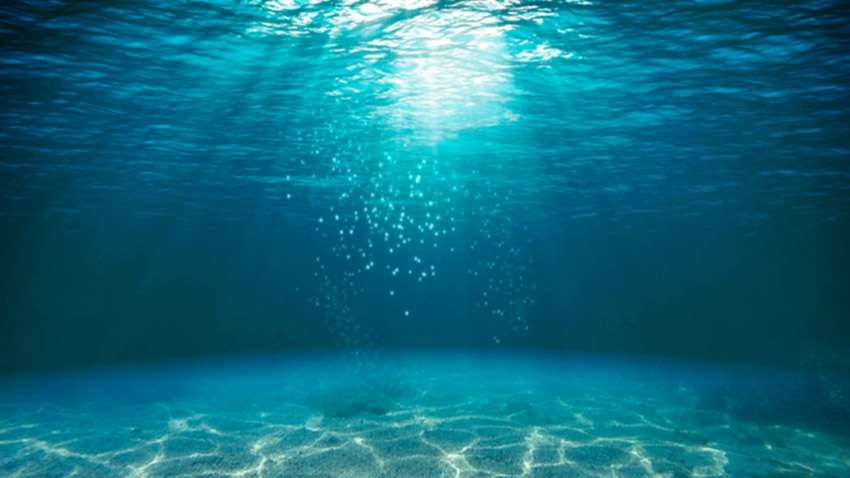
Source: The World Bank.
Demystifying Ocean Governance
Ocean governance highlights the need to assess environmental, social, and economic impacts in project development, programs, plans, or policies. In managing potential impacts during the pre-development phase, designated tools like Social Impact Assessment (SIA) and Environmental Impact Assessment (EIA) are crucial. These assessments help mitigate and address impacts before a proposal or scheme goes ahead. This enables decision-makers to base decisions on uncertainties in economic, political, and social aspects of a development’s potential benefits and drawbacks.
Marine Policy And Law
Marine Policy and Law pertain to the legal frameworks and policies established to govern various aspects of oceanic affairs. This includes defining boundaries, managing marine resources, regulating fisheries, and implementing conservation measures. These policies are crucial for ensuring sustainable use of marine resources, preventing overexploitation, and addressing environmental concerns. Furthermore, they are useful in maintaining a balance between economic activities and the preservation of marine ecosystems. The field of Marine Law involves international, national, and regional efforts to establish rules and guidelines. As a result, these govern human activities in the marine environment, promoting responsible and equitable use of ocean resources.
Marine Policy And Law Challenges
Ocean governance primarily focuses upon the management of human interactions within the marine environment. The development and implementation of practical oceans and fisheries policy at the regional, national and global levels are goals we are striving towards. However, ocean governance faces challenges within the realms of marine policy and law which requires coordination and cooperation across zones and sectors. The policy areas it covers are distinguished from general policy areas due to legal property rights in the ocean being far different from those found on land (Hoagland et al., 2019)
Other Obstacles To Ocean Governance Within The Context Of Marine Policy And Law
Other obstacles stem from differences in environmental governance systems between countries bordering the same marine region (Kern and Gilek 2015 ; Kato, 2018). The discrepancies in this cause a temporal mismatch in effective jurisdictional decisions for a sound ocean governance system. Another reason that ocean governance is facing difficulties is due to soft laws which are non-strictly binding laws. Since soft laws lack legal significance, voluntary instruments like code of conduct, standards, and guidelines are not directly enforceable.
The significance of the marine space in sustaining human lives through food supply, oil and gas resources, transportation, minerals and security has prompted many nations to claim authority over it (Singh and Ort, 2019). This leads to division and zonation of the oceans, which in turn results in difficulties in tackling ocean threats like degradation of marine environments.
United Nations Convention On The Law Of The Sea And How It Relates To Ocean Governance
The United Nations Convention on the Law of the Sea (UNCLOS) stresses the notion that “all problems of ocean space are closely interrelated and need to be addressed as a whole” (United Nations Oceans and Law of the Sea, 2023). Divided maritime sectors are subject to different national jurisdiction that operate under different regulations. Due to the vastness of the oceans, there are also high seas that do not fall under any national jurisdiction. UNCLOS declared them as exclusive economic zones (EEZ), where all states are entitled to freedom of usage, especially as fishing grounds for fisheries. Hence, acknowledging and considering the complexity of zonal aspects are critical when looking at tools to improve governance issues.
To promote sustainable fishing, particularly commercial fisheries, management solutions are formulated and mandated. For instance, the New Zealand government introduced the Quota Management System (QMS) which allocated an annual limit of capture by the fisheries to alleviate the overfishing crisis. However, QMS is flawed as it is a market-based solution which excludes the small-scale fishers (Hersoug, 2018). This demonstrates the complication in addressing regulatory gaps in the decision-making process as observed in this case, which is a lack of representation of communities.
Leveraging norms is an alternative way to harness management and conservation benefits in defining property rights (Grafton and Squires, 2013). For instance, there are regional and cultural norms and practices that prohibit the consumption of certain marine species that place a community-wide limit in the Indo-Pacific region.
Importance of Legislation and Stronger Governance
Ocean governance warrants collective action. Organisations with governing power should implement and enforce legislation where needed to prevent pollution. Legislation and implementation should undergo continuous development and periodic review to ensure they remain current and effective. A marine policy that provides an overarching framework that helps inform better marine planning should address issues from a multidisciplinary standpoint. To pursue sustainable environmental management goals, ocean governance should entail laws, rules, institutions and political measures related to the oceans in a harmonised approach.
Marine Resource Management
Commercial and recreational fisheries are both contributing to declines in fish stock. This causes a loss in biodiversity within the oceanic ecosystem. However, sources speculate that commercial fisheries are the primary causal factor in overharvesting due to large-scale fishing. Fish stocks and seafood sources are finite, and fishery management must consider biological factors. Also, businesses must account for ecosystem considerations, oceanography, stock dynamics, economics, and sociology.
Effective marine resource management involves diverse disciplines to conserve resources while considering economic and social implications. Decisions on allocating fishery resources and harvesting strategies are critical and come with complications in the economic and social context.
Fisheries are not the only threat to the conservation of marine resources. Indeed, oil and gas developments also pose huge risks. Oil spills in offshore waters cause catastrophic effects on marine environments, wildlife, and human communities. The industrialisation of the deep sea, as a result of oil and gas exploration, has brought about multiple environmental disasters. Major blowouts in history exemplify this. Commercial offshore oilfields involve operations like construction of oil platforms, drilling, processing, production, and transportation of marine oil and gas. The scientific community expects significant and possibly irreversible impacts from this.
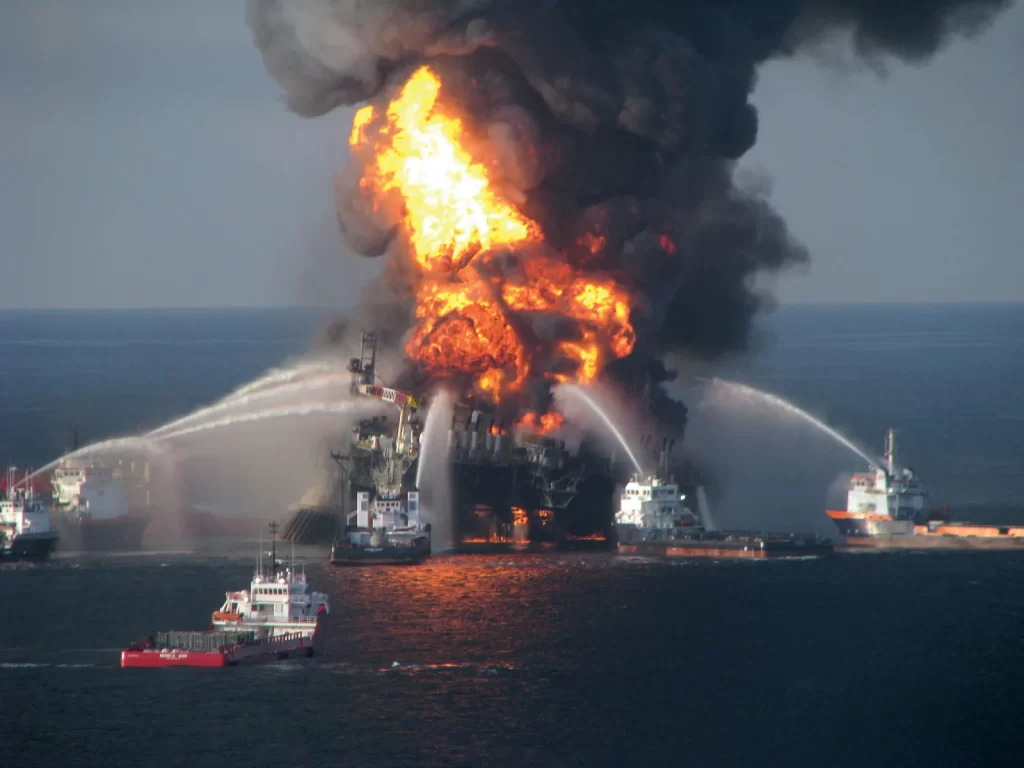
Source: Britannica.
Marine Conservation
Multifaceted efforts in marine conservation dedicate themselves to safeguarding the health and vitality of oceanic ecosystems. These efforts employ strategies to preserve biodiversity, maintain ecological integrity, and establish protected areas for sustainable management of vulnerable ecosystems. It looks beyond immediate marine benefits, considering ecosystem interconnectedness and broader global environmental balance. Maritime conservation aims to mitigate threats, build resilience, and nurture long-term ocean well-being with initiatives like reserves and sustainable practices.
Marine Protected Areas (MPAs) has proven to be an efficient way of achieving marine conservation goals for many nations. They are designated areas in the ocean that place restrictions on human activities. There are different types of MPAs depending on the activities permitted in a particular reserve. Some are no-take MPAs where they ban fishing, while others are established as multi-use MPAs in which fishing is allowed with restrictions.
For instance, the Galapagos Marine Reserve and Palau National Marine Sanctuary are some of the world’s largest areas of protected ocean. These marine reserves boast a rich biodiversity and several habitats that make up a thriving ecosystem. They also sustain the ocean-dependent communities by providing food security and ecotourism.
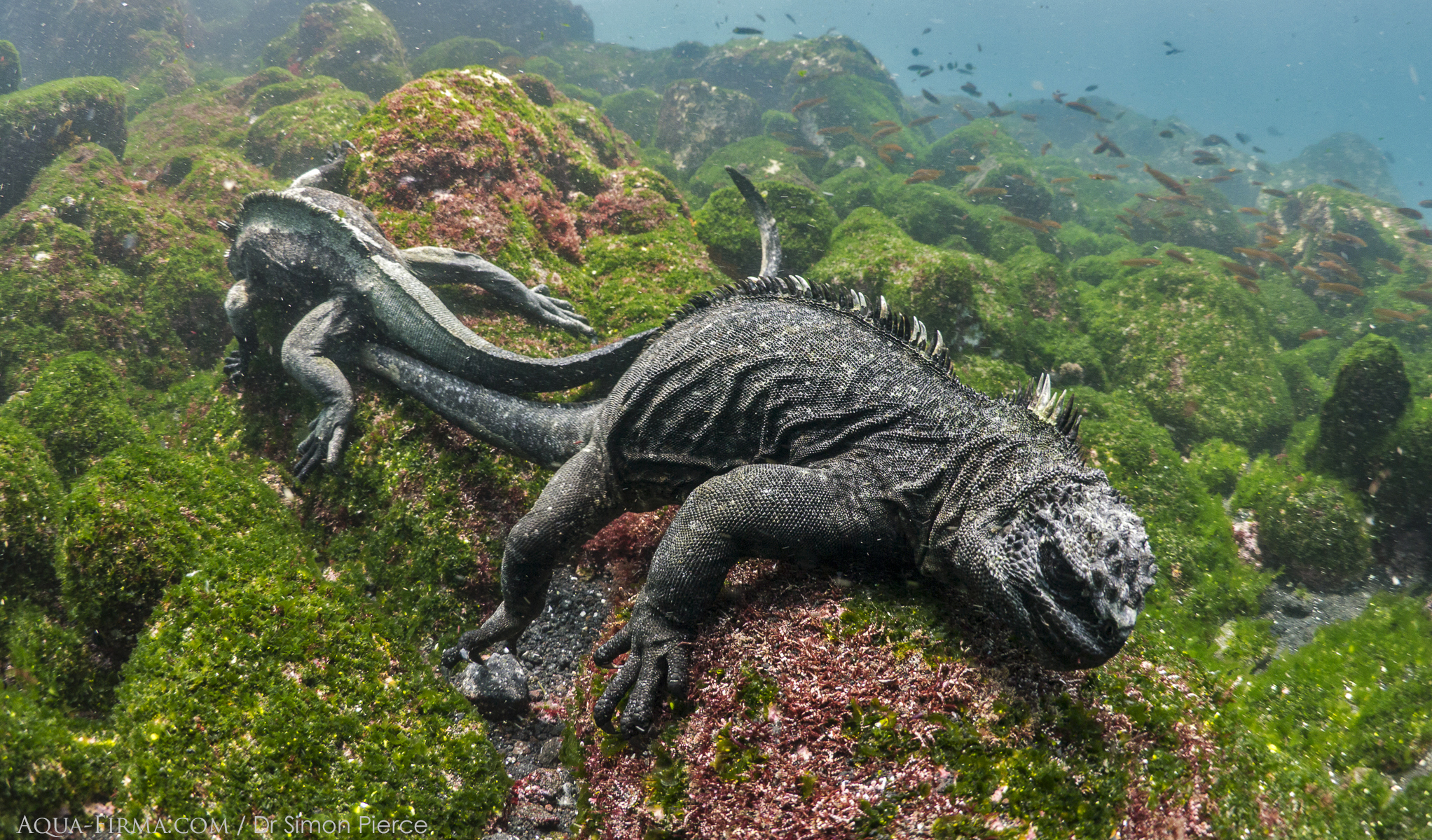
Source: Water Wilderness Wildlife.
Marine Spatial Planning
Marine Spatial Planning (MSP) organises shipping, fishing, and renewable energy, balancing interests for sustainable maritime resource use. It considers environmental, economic, and social factors to minimise conflicts and support responsible development. MSP aims to foster harmony among diverse marine activities while safeguarding the integrity of marine ecosystems.
MSP does this by utilising information gathered from the natural system to allocate and manage spatial and temporal distribution of human activities. The Great Barrier Reef Marine Park is a leading example in leveraging MSP in zoning efforts. It is a public process involving stakeholder engagement to achieve conservation goals while at the same time maintaining the economic value of the ocean. The multi-use zoning systems stemming from spatial planning provide protection of biological and ecological diversity while still allowing for sustainable use in specific areas.
Marine Science And Technology
Seaweed Innovations
In Marine Science and Technology, researchers delve into ground-breaking applications of seaweed. Researching seaweed includes utilising its ecology, economic uses, and technology to unlock sustainable solutions for industries like food, agriculture, and pharmaceuticals. Scientists explore seaweed’s unique properties, advancing scientific understanding and practical applications, promoting responsible marine resource use.
What is Seaweed Farming?
Seaweed farming has been around for millennia, but has become more prominent today, due to a variety of applications and uses. Also referred to as kelp farming, seaweed farming is used for areas such as medicine and beauty products, as well as for personal use. It is also used to produce foods, including protein alternatives.
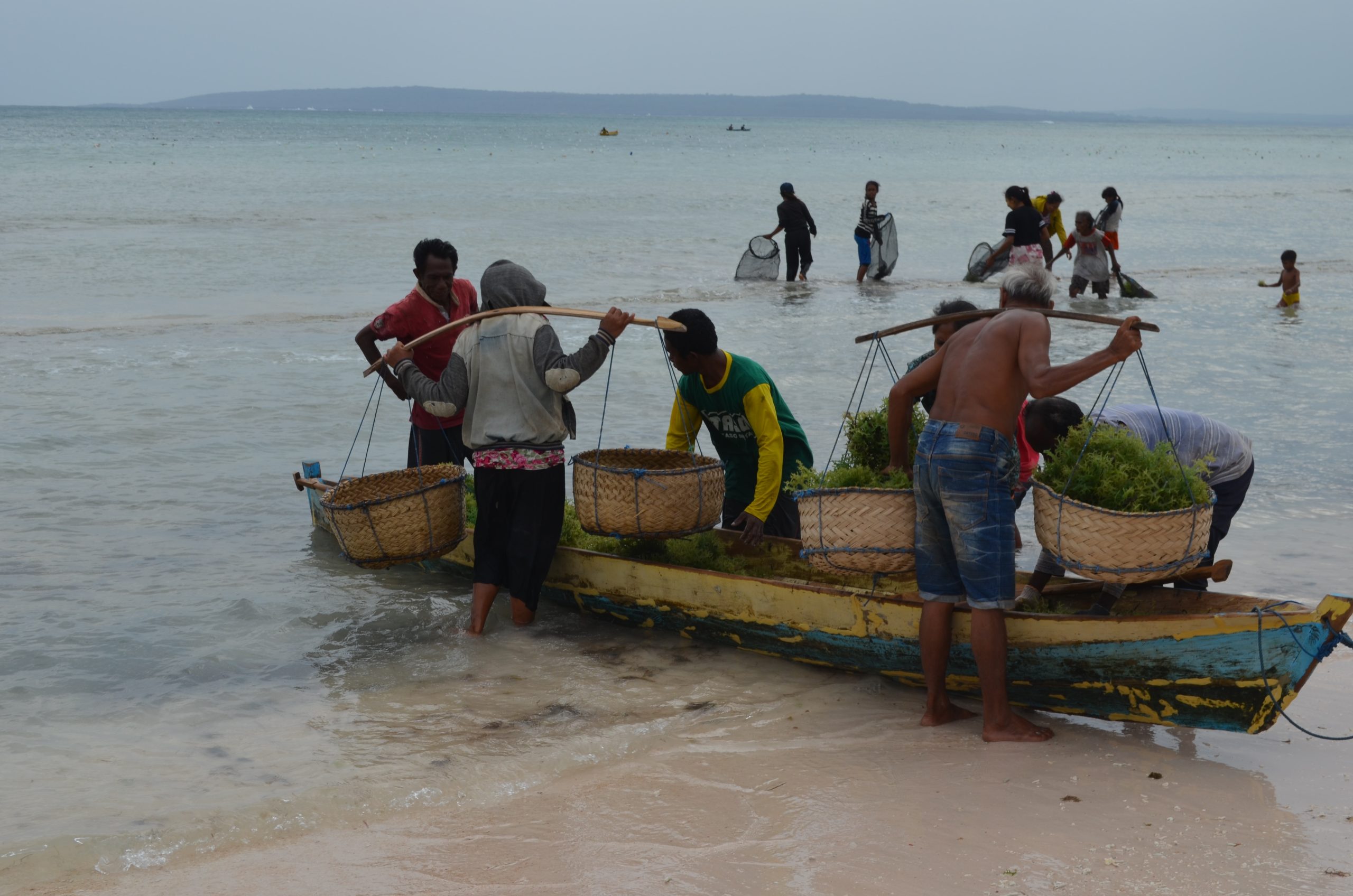
Source: Unsplash.
Technologies Used to Cultivate and Harvest in Seaweed Farming:
There are several methods and technologies used in seaweed farming to cultivate and harvest seaweed effectively and efficiently from the oceans. Examples of these methods include:
- Longline Culture: In this method, long seaweed lines or ropes are suspended on floatation devices in the water. Thus, longline culture is used in high-exposure areas for the production of large amounts of seaweed and other species.
- Floating Raft Culture: Seaweed is hung on ropes or even nets that are suspended on a floating wooden raft in places where there are less water movements and under favourable environmental conditions.
- Tube Net or Net Culture: The method involves suspending seaweed nets in the water. For instance, the method is useful to cultivate large or small seaweed species in deep water.
- Trench Culture: The technique entails digging channels or trenches in the seabed and filling them with seaweed spores or seedlings. Consequently, people use this method to cultivate a specific type of seaweed.
- Automation: A method used by commercial farming companies to produce, extract, or cultivate plants and species from the oceans to meet global population demands for fish, seaweed, and materials. Relevant parties use this technology or method to monitor ocean water conditions and make seaweed farming less labour intensive.
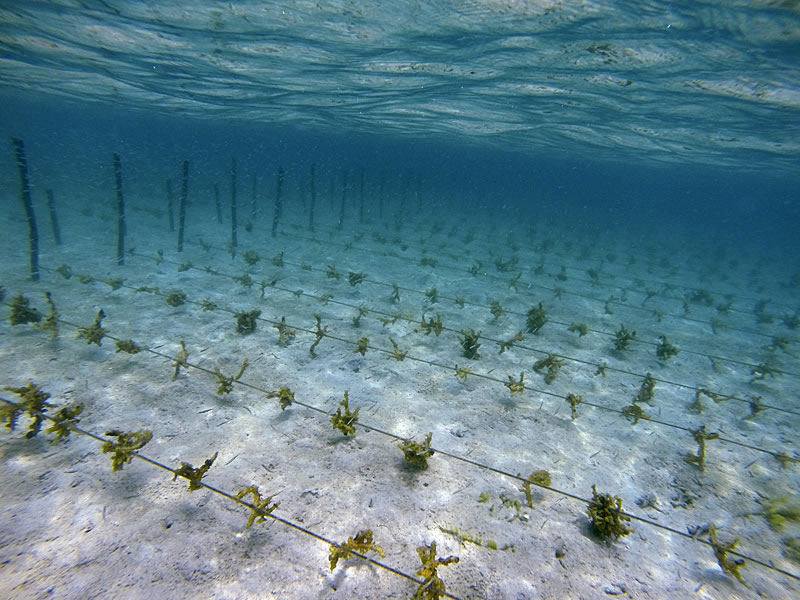
Source: Living Oceans Foundation.
Economic and Environmental Benefits of Seaweed Farming
Seaweed farming has several environmental and economic advantages, that make it an essential constituent of sustainable agriculture, thereby contributing to the achievement of United Nations (UN) Sustainable Development Goals (SDGs).
The environmental benefits of seaweed farming are that seaweed is a sustainable source of biofuel, and sucks up carbon dioxide (CO2) emitted into the air. This helps with the reduction of greenhouse gas emissions and effects of ocean acidification. It also makes people aware of the importance of sea and ocean water, and promotes the importance of their protection. Seaweed is important for biodiversity in that it provides shelter for several species in the ocean, thereby restoring the ecosystem. Seaweed absorbs the pollution found in the oceans leaving clean coastlines.
Moreover, seaweed production does not require the use of fertiliser and fresh water, in contrast to traditional farming. It has been used to make non-fertile land fertile (i.e. it acts as a natural fertiliser) to produce more yields on other crops. Seaweed farming can also contribute to climate adaptation and mitigation.
The economic advantage of seaweed farming is that it has the opportunity to provides food security, income generation and environmental health in nations where seaweed is farmed (World Bank Group, 2016). This boosts the economic growth of many impoverished nations.
How Seaweed Farming Leads to Sustainable Agriculture
Nowadays, seaweed farming has been identified as one of the most sustainable examples of aquaculture and a way to sustainable agriculture. Sustainable agriculture is an approach in farming where farmers produce the required amount of a society’s food demands, without negatively impacting the environment and compromising natural resources for future generations. The current farming practices are not so effective to the environment as some methods or approaches lead to soil erosion, overgrazing and increased emissions of greenhouse gases. Seaweed offers various sustainable farming practices without damaging our natural resources, which is why it can play an important role in sustainable development.
Ocean Governance and Renewable Energy
In the context of ocean governance, renewable ocean energy falls into a peculiar category where ocean industrialisation intersects with the environmental imperative to decarbonise the energy system. Interestingly, renewable ocean energy holds the potential to provide reliable energy to millions of people, contributing to a level that meets the needs of a world with a growing demand for clean electricity. It is expected to reduce global carbon emissions from fossil fuels by 500 million tons by 2050.
Ocean energy can be harnessed using a variety of devices. This depends mainly on the type of energy being harnessed, the amount of power to be supplied, and other considerations.
The primary energy types associated with the ocean include:
- Tidal Energy: this energy arises from the gravitational force between the celestial bodies; the sun, the Earth, and the moon, leading to the rise and fall of tides. Tidal stream systems capture this energy by employing underwater turbines to harness the kinetic energy of moving water, while tidal range systems utilise the height difference between high and low tides.
- Wave Energy: point absorbers derive this energy from the motion of ocean waves. Devices like wave energy converters or oscillating water columns can capture the kinetic energy of waves and convert it to do useful work such as electricity generation or water desalination.
- Ocean Thermal Energy Conversion (OTEC): OTEC systems harness the temperature difference between the warm surface water and the cold deep water in the ocean to generate electricity. This technology depends on the natural temperature gradient of the ocean.
- Ocean Currents Energy: Harvesting ocean current energy is most effective in locations between islands, along heavily indented coasts with strong tidal currents, or where the temperature difference between warm surface water and cold deep water is approximately 20°C or more.
- Salinity Gradient Energy: Here, the difference in salinity (salt concentration) between seawater and freshwater can be used to generate energy through processes like pressure retarded osmosis (PRO) or reverse electrodialysis (RED).
Renewable ocean energy could power offshore activities, isolated islands, and coastal communities. However, as a new technology, its development and commercialisation are still evolving, and it faces challenges that include high installation, operation, and maintenance costs, regulatory issues, and environmental threats.
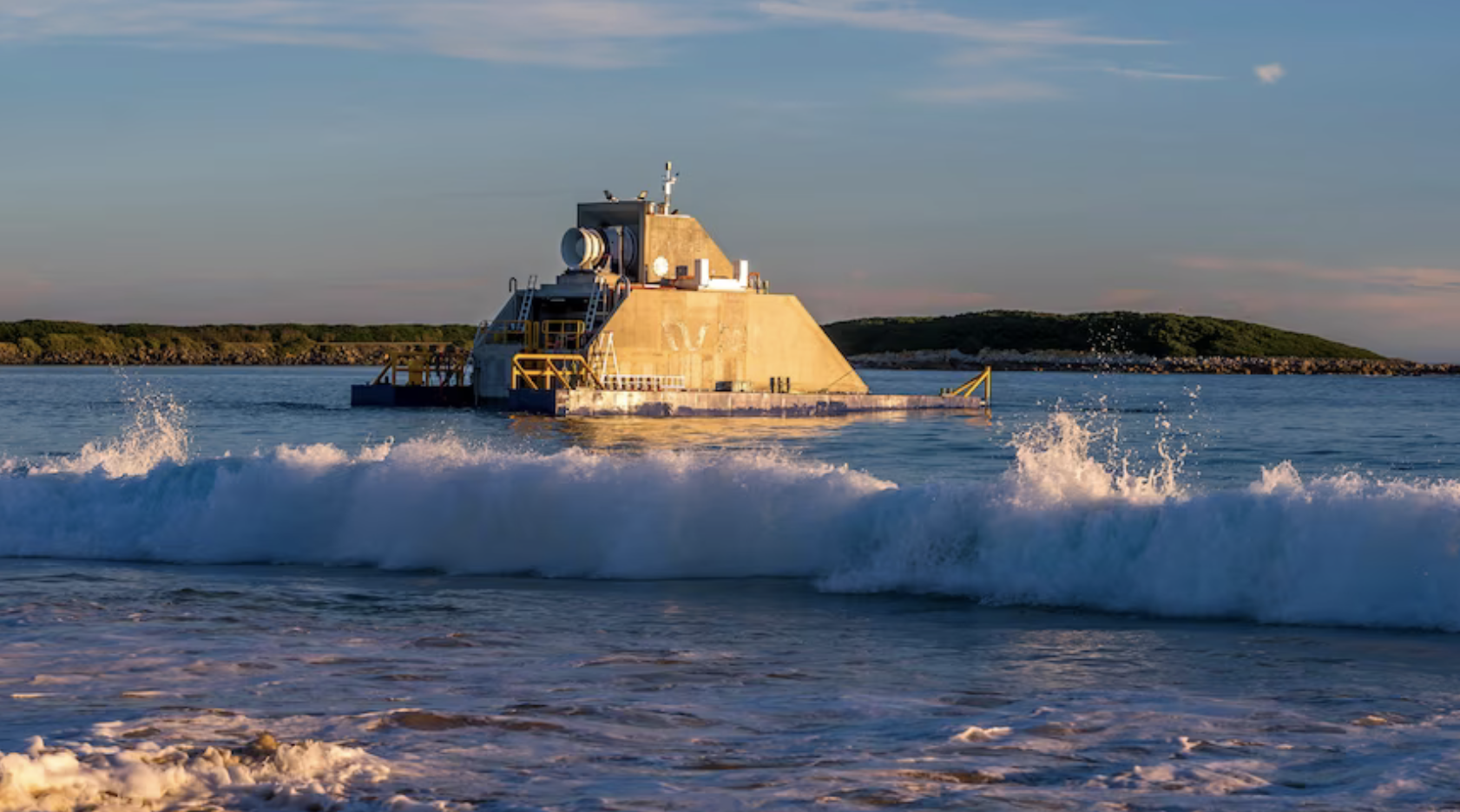
Source: ABC News
Ocean Governance Institutions
Ocean governance institutions bring together government bodies, stakeholders, various organisations, and industry entities. This collaboration aims to establish effective frameworks, policies, and practices for the sustainable management of marine resources. By fostering cooperation among these diverse entities, these institutions work towards ensuring responsible and equitable use of oceanic spaces. This collaborative approach addresses environmental concerns, promotes conservation, and seeks to balance economic activities with the preservation of marine ecosystems. Ocean governance institutions, through collaboration, shape policies crucial for ocean health and sustainability, emphasising shared responsibilities and coordinated efforts.
International Ocean Governance
International ocean governance encompasses the influence of global entities, international laws, and agreements in managing Earth’s oceans. Collaboratively establishing global regulations, defining high seas boundaries, and addressing conservation and sustainable resource use are integral aspects of this. Through cooperative frameworks and legal instruments, countries work together to navigate the complexities of ocean governance. As a result, this ensures the responsible use of shared marine resources and the preservation of the marine environment. This benefits present and future generations.
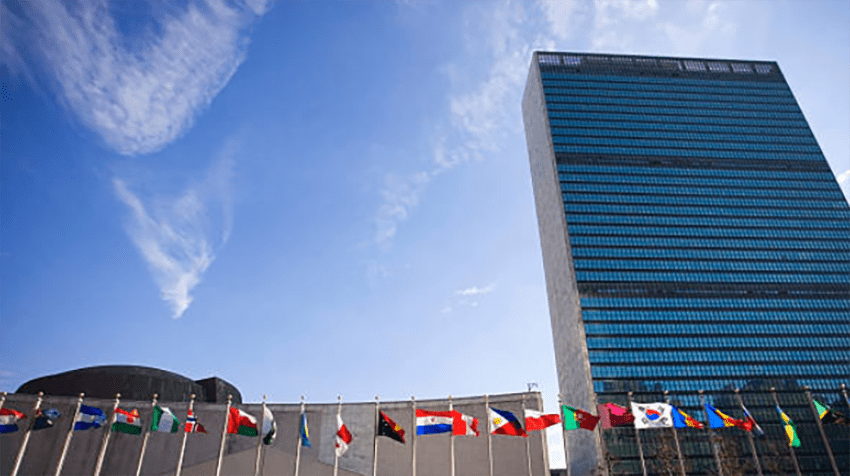
Source: iStock.
Impacts of Climate Change On the Ocean
Ocean Warming
As a result of industrial-era global warming, rising sea surface temperature has brought about unprecedented changes to the marine biosphere. For example, heatwave events like the one in 2016, in which extensive bleaching in the northern region of the Great Barrier Reef severely impacted reefs, with prominent bleaching of more than 60% of the corals. Whereas in 1998 and 2002, extreme bleaching occurred further south but with lower severity than in 2016 (Hughes et al., 2017). This demonstrates the critical nature of the impacts of climate change on some of the most important ecosystems in the world.
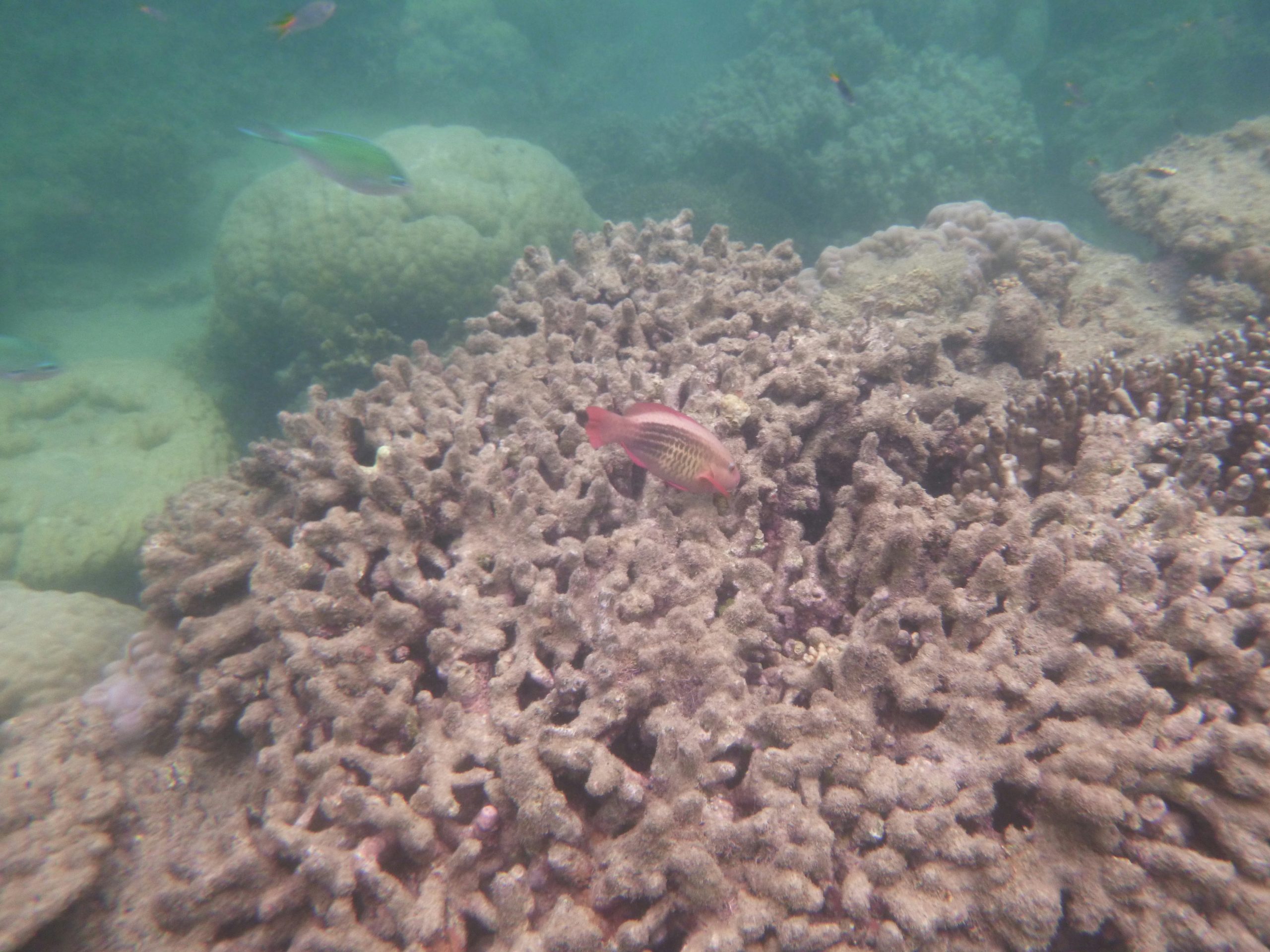
Source: Unsplash.
Ocean Acidification
Ocean acidification is the process where the world’s oceans become more acidic due to absorbing carbon dioxide (CO2) from the air. This happens because the ocean takes in a significant amount of the CO2 caused by human activity like burning fossil fuels. When CO2 mixes with seawater, it forms carbonic acid, making the ocean more acidic.
This acidity harms marine life, especially creatures like corals, molluscs, and some plankton that rely on carbonate ions in the water to build their shells or skeletons. As the ocean becomes more acidic, it becomes harder for these organisms to create and maintain their structures. This can have a domino effect on entire marine ecosystems, impacting coral reefs, shell-forming creatures, and the food web.
Reducing CO2 emissions globally is essential to combatting ocean acidification and protecting marine life. Sustainable practices, the use of renewable energies, and conservation efforts are crucial in addressing this challenge.

Source: Britannica.
Melting Sea Ice
Sea ice melting happens when the ice covering polar seas turns from solid ice into liquid water due to rising temperatures. This is mainly because of global warming. There are two types of sea ice: floating ice shelves and icebergs.
The consequences of sea ice melting include rising sea levels, which affects wildlife like polar bears and penguins, and also influences ocean currents. As ice melts, it releases freshwater into the ocean, which can impact ocean circulation.
To address sea ice melting, it’s crucial to reduce greenhouse gas emissions globally and work towards mitigating climate change. This involves initiatives to adapt to the changes and efforts to tackle the root causes of global warming.

Source: Unsplash.
Sea Level Rise
In the coming decades, global sea levels are set to rise further. Morgan et al. (2020) claimed that the water depth will continue to rise with modest increases under RCP 4.5, whereas sea level rise under RCP 8.5 will result in reef flats or the euphotic zone becoming fully submerged.
Sea level rise impacts shallow water coral ecosystems by reducing the amount of light available for coral growth. As sea levels increase, more water covers coral reefs, limiting sunlight penetration. Since corals rely on sunlight for photosynthesis and have a symbiotic relationship with algae, this reduced light can lead to stress, coral bleaching, and weakened resilience. Some corals may adapt to changing conditions, but the speed of sea level rise and other environmental stressors may outpace their ability to do so. To mitigate these effects, it’s vital to address multiple stressors on coral reefs, including water pollution, coastal development, and to take global action to combat climate change and reduce greenhouse gas emissions.
Ocean Governance and the Seafood Industry
Environmental Impacts
The ocean represents a significant percentage of the earth’s biosphere, and is responsible for influencing the climate of life on land. The vast array of ocean-dwelling life has a considerable impact upon our climate. With the threat of greenhouse gases and global warming, both seaweed and plankton act to allow the ocean to act as the world’s largest carbon sink. Thus, protecting the ocean’s biosphere and conserving marine habitats is vital.
The Commercial Seafood Industry
One of the biggest threats to the ocean’s biosphere is the threat from the commercial seafood industry. Studies have shown that deep sea ocean trawlers are the number one cause of destruction to the ocean floor and seabed habitats (Cadell, 2020). This is ahead of all other causes such as offshore mining. Ecosystem and seabed habitats have been extensively disrupted and threatened by this practice, which also results in bycatch and threats to endangered species. According to another major study, the largest cause of buoyant debris within the Great Pacific garbage patch is commercial fishing, by fleets from China, South Korea, and Japan (Lebreton et al., 2022). The amount of fishing nets found on remote beaches globally exemplifies this problem.
Fish And The Trophic Level
Alongside this is the targeting of higher trophic species of fish, which leads to extinction and threats to already endangered species. It has the capacity to throw the food chain out of balance, and the capacity for lower trophic or smaller fish to consume more plankton, thereby reducing carbon sequestration (Stafford et al., 2022).
Despite the impacts of commercial fishing, well over 50% of all global fisheries come from aquaculture or fish farms. A significant issue linked to this is the localised pollutants from open cage fish farms which rely on caught fish to feed farmed fish, as well as polluting nearby ecosystems and marine areas (Taranger et al., 2015). Added to this are the public health issues caused by closed cage fish farms. Sea lice become an epidemic and unscrupulous antibiotic use is employed. Cramped conditions then exist allowing for fish to be contaminated living amongst their own waste. Such conditions cause fish to become exposed to disease.
Allowing for unnatural and cramped conditions where diseases and sea lice can thrive is incompatible with animal welfare. The transfer of zoonotic diseases from these conditions, as well as antibiotic resistance, is another major threat born out of this industry (Okon et al., 2022). Trillions of dollars are expected to be lost due to the cumulative impact of further antibiotic resistance (O’Neill, 2016), on top of public health threats caused by zoonotic disease.
Aquaculture
Aquaculture, including shrimp farms, has caused other types of ecosystem damage, such as damage to mangrove forests over the last 20 years. On top of this, the industry uses forced labour to cut costs. Mangrove forests have acted as a buffer to cyclones in the Bay of Bengal, saving lives. However, with these forests threatened, human lives in these poorer regions are threatened also.
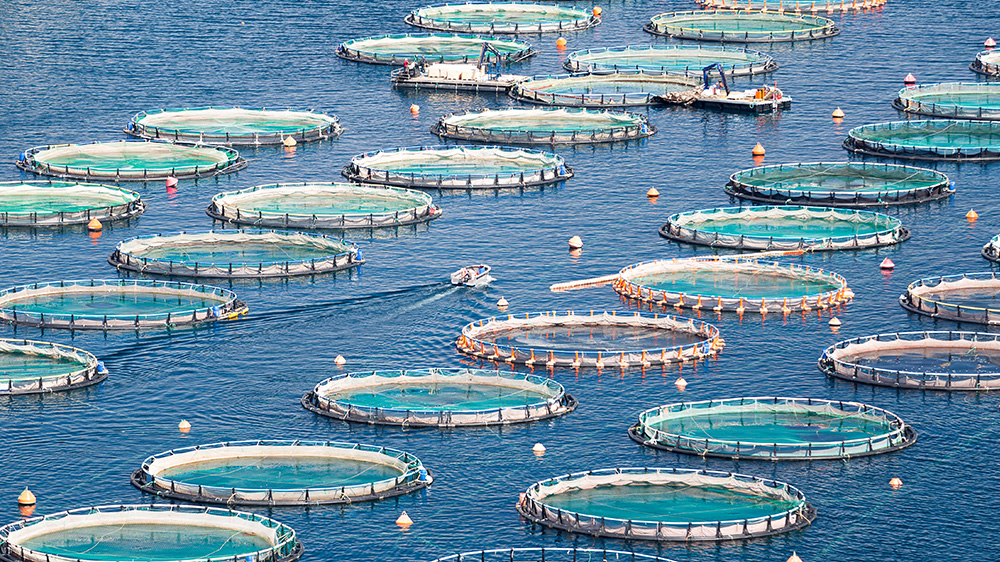
Source: Center for Food Safety.
Human Rights Abuses
The seafood industry is also rife with human rights abuses, including human slavery. Due to being confined on fishing vessels, or on fish/shrimp farms, workers, sometimes working as slaves through forced labour, are subjected to horrific abuse (Vandergeest et al., 2021). This has been apparent in South-East Asia and the Far East more widely, where corporal punishment, forced labour, coercion, death threats, and even cases of murder have transpired. The victims of this are usually vulnerable people from poorer regions who are at the complete mercy of those who hired them.
Human rights abuses are not confined to these regions however. Within western, developed countries, details of abuse and forced labour have been reported by many sources; from regions like the British Isles to New Zealand. For a number of decades, migrant workers in particular, have been subjected to forced labour, coercion, and human rights abuse.
moving forward
Fisheries, oil, and gas are multi-billion dollar industries which cause damage to the ocean and to poorer people living in coastal regions. Huge sums of money have been poured into research and lobbying governments to act against the plundering of the ocean. The reality is that the ocean is being depleted, with threats to biodiversity and ecosystems, as well as threats to the poorer regions on the planet. Developing countries can harness new technologies to benefit from their coastal proximity without causing harm to the environment. This is evident in the use of green and renewable technologies, particularly in connection with renewable energy and practices such as seaweed farming. Through holistically and systemically appraising the impacts of different industries, we can identify the pathways to creating a Thrivable planet.
Why is it essential that we focus on ocean governance?
The ocean significantly impacts people from coastal regions around the world. This is in part due to cyclones, floods, and other natural disasters, which climate change exacerbates. Additionally, some regions of the world face threats through rising sea levels. The ocean is vital as the world’s greatest carbon sink and a regulator of so much of the world’s climate. If we do not address the environmental issues connected to the ocean, we face devastating ecosystem threats and human catastrophe. Increasing our awareness of this increases our chances of mitigating the effects of climate change.
achieving the United Nations Sustainable Development Goals (SDGs) and how they link to ocean governance
“The 2030 Agenda for Sustainable Development, adopted by all United Nations Member States in 2015, provides a shared blueprint for peace and prosperity for people and the planet, now and into the future. At its heart are the 17 Sustainable Development Goals (SDGs), which are an urgent call for action by all countries – developed and developing – in a global partnership.”
United Nations
Ocean Governance ties into several United Nations Sustainable Development Goals (SDGs), such as:
- SDG 8: “Decent Work and Economic Growth“. As effective ocean governance contributes to the sustainable development of maritime industries.
- SDG 11: “Sustainable Cities and Communities“. Since coastal management and protection are essential for resilient and sustainable communities.
- SDG 12: “Responsible Consumption and Production“. Considering sustainable management of ocean resources to ensure responsible use.
- SDG 13: “Climate Action“. As proper ocean governance plays a crucial role in mitigating and adapting to the impacts of climate change.
- SDG 14: “Life Below Water“. This focuses on the conservation and sustainable use of marine resources, oceans, and seas.
These goals highlight the interconnectedness of ocean governance with broader global sustainability objectives.
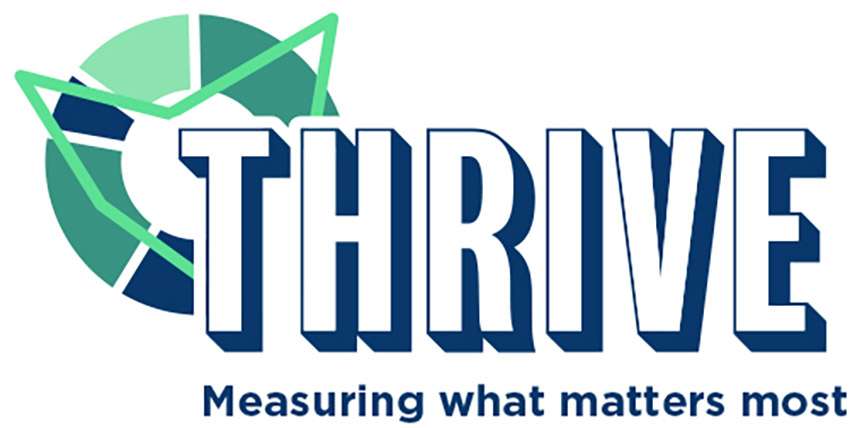
Source THRIVE.
A Thrivable Framework
Systemic Holistic Model
THRIVE stands for The Holistic Regenerative Innovative Value Entity. It forms the basis for the THRIVE Framework, and is a transdisciplinary, holistic modelling system. It models likely outcomes of actions well before they occur. The purpose of the THRIVE Framework is to help measure the potential of initiatives taken today. In fact, this is to help transform society towards a ‘better than sustainable’ future. The SDGs are the goals and the THRIVE Framework is the strategy to realise them.
12 Foundational Focus Factors (FFFs) underpin the THRIVE Framework. Furthermore, these FFFs are theories and guidelines. Indeed, they help us navigate ways of living and working through crises, natural disasters and climate change. As a result from several years of comprehensive research, the 12 Foundational Focus Factors identify necessary and sufficient conditions to transition humanity beyond sustainability towards thrivability.
Sustainability should not be about surviving, but thriving. The 12 FFFs, along with the THRIVE platform, uses backcasting to solve problems. Backcasting is like planning your dream future and then figuring out the steps to make it happen. It’s not just predicting the future based on what’s going on now; it’s about working backward to set goals, tackle obstacles, and plan the actions needed. People often use it in sustainability planning to aim high and innovate ways to get there.
The Systemic Holistic Model brings together these 12 Foundational Focus Factors, which operate across four quadrants, working together to create Thrivable transformations. These quadrants are significance, shift, scale, and scope.
Complex Wicked Problems
Complex, Wicked Problems is a FFF. It refers to a social, cultural, political, or economic problem that is difficult to solve. It is the result of volatile, uncertain, complex, and ambiguous circumstances. The ocean, in and of itself, is not a problem. However, climate change, biodiversity loss, man-made disasters, overfishing, etc., are all complex, wicked problems. Solving some of these issues, may, in fact, cause other problems, either in the ocean or elsewhere.
Entity Model
The FFF of Entity Model aims to navigate what entities can do. In fact, an entity can be anything from a small single-celled organism to the entire cosmos. Furthermore, these models shape the boundaries that outline their limits. THRIVE’s logo, a ciambella chart, outlines two important boundaries for humanity to adhere to. These boundaries consist of a social floor, representing the minimum for an entity’s survival, and an environmental ceiling, where excessive resources are extracted from the environment. Ocean governance seeks to maintain the social floor while remaining beneath the environmental ceiling. It does this through regulations, laws, policies, and collaboration between nations, organisations, individuals, and communities.
Finite Resources
Finite resources are resources that are consumed faster than they are produced. They are non-renewable for this reason. Finite resources is another FFF. Its focus is on responsible consumption, reusing, repairing, and recycling. All stakeholders, consumers, businesses, and policy makers, need to understand that the resources in the ocean are finite. Ocean governance is key to creating policies that protect our valuable marine resources for future generations.
Strong Sustainability
The FFF of strong sustainability ensures that humanity understands natural resources as finite. In other words, we shouldn’t exchange resources for money. Ocean governance aims to understand the oceans limits. Furthermore, it pushes for a holistic, systems-focused and regenerative approach to deal with global ecosystem issues. Humanity can’t replace our oceans. Integrating strong sustainability into an ocean governance approach ensures we preserve and protect resources within the oceanic ecosystem.
Systems Thinking
Systems thinking, a FFF, is an approach that involves taking a holistic look at the range of existing challenges over time. Interactions between elements of the system can directly or indirectly affect its success or failure. The ocean is a huge system. After all, the ocean covers 70 percent of the Earth. What happens in one part of the system will impact another. In fact, land pollution can adversely affect the ocean.
Ocean Governance Cluster
The Ocean Governance Cluster, part of THRIVE’s 7 outreach clusters, focuses on researching, educating, and advocating for the community. It emerged to address the increasing demand for solutions related to ocean governance. The talented volunteers of this cluster collaborate together and research, producing whitepapers for the benefit of the public. The Seafood Stewardship Index (SSI) whitepaper is the result of several months worth of research. Using the THRIVE Platform, the SSI explores and evaluates the performance of keystone actors in the seafood industry.
Join Us On Our Ocean Governance Journey
If you want to join us on our governance journey, you can visit our homepage, sign up for our newsletter, listen to our podcast, watch our videos on our YouTube channel, read our blogs, or interact with experts during our webinars.
